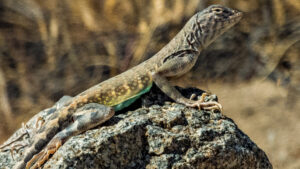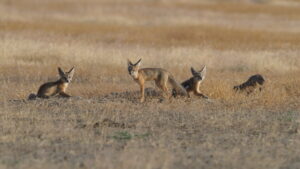
Do Not Feed Wildlife:
Feeding animals can cause them to become habituated to human food and lose their fear of people, leading to dangerous behavior. They may begin approaching people for food or becoming aggressive when food is not provided. Habituated animals become dependent on human-provided food, which can impair their ability to forage and find their own food in the wild.

Keep Your Pets on a Leash:
If you are traveling with pets, keep them on a leash and under control at all times to avoid disturbing wildlife. Pets are not permitted on any trails. Even well-behaved and friendly pets can disturb wildlife, as their presence and scent can be perceived as a threat. Keeping them leashed and controlled can help avoid situations where wildlife may become agitated or defensive.

Respect Their Space:
Always keep a safe distance from animals, and avoid disturbing or harassing them in any way. If the animal you’re watching becomes aware of your presence and changes its behavior, it’s a sign that you’re probably too close. Use binoculars or a camera lens to observe safely and respectfully.

Stay Quiet and Patient:
Many animals are shy and may be easily scared away by loud noises or sudden movements. Stay quiet and patient to increase your chances of spotting wildlife
